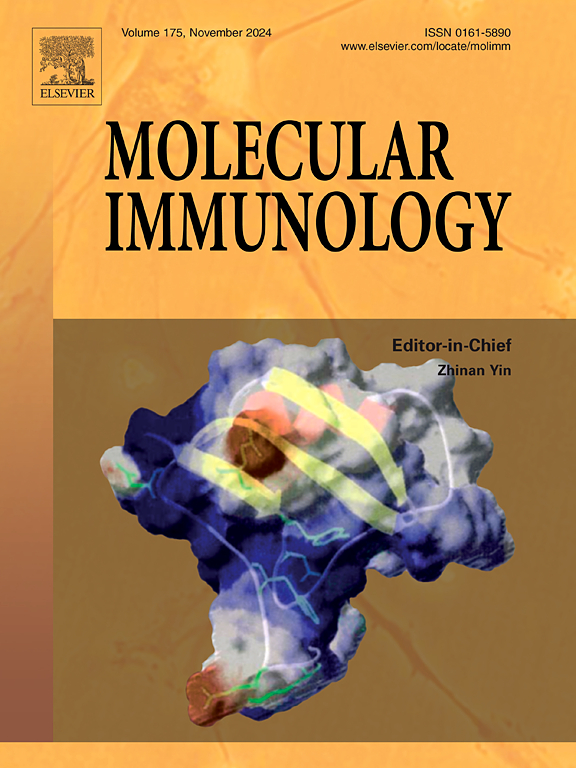Characterization of the heterogeneity in oxidative stress and transcriptional programs within the in vivo microenvironment of ulcerative colitis
IF 3
3区 医学
Q2 BIOCHEMISTRY & MOLECULAR BIOLOGY
引用次数: 0
Abstract
Objective
Oxidative stress exerts an essential role in the pathogenesis of ulcerative colitis (UC). This study aims to unveil the heterogeneity in oxidative stress among immune cell subpopulations in UC.
Methods
Human colon epithelial cells were exposed to 100 ng/mL LPS to stimulate UC, which were administrated with antioxidants 500 mM butylated hydroxyanisole or 20 μM N-acetylcysteine. A single-cell atlas was constructed across UC, and heterogeneous cell subpopulations were evaluated at single-cell and bulk levels.
Results
Activation of oxidative stress and inflammatory response, enhanced migration capacity, and impaired tight junction were observed in LPS-induced UC cell models, which were ameliorated by antioxidants. Five cell types: plasma cells, T cells, myeloid cells, and B cells were clustered across UC and control gut biopsies, which were tightly interacted. Myeloid cells were sub-clustered into conventional dendritic cells, M1 macrophages, IL23R+ myeloid cells, mast cells, and follicular dendritic cells; T cells were sub-clustered into Th17, CD4+ naïve T cells, CD8+ cytotoxic T cells, CD4+ exhausted T cells, CD8+ memory T cells, Tregs, and Th1. The heterogeneous myeloid and T cells was confirmed at the single-cell and bulk levels. The activity of oxidative stress was heterogeneous among diverse myeloid cell or T cell subpopulations, with the strongest activity in M1 macrophages and CD4+ exhausted T cells, respectively. It was also found the specific transcriptional programs of M1 macrophages and CD8+ cytotoxic T cells.
Conclusion
Overall, our findings unveil the heterogeneity in oxidative stress and transcriptional programs among diverse myeloid and T cell subpopulations in UC.
溃疡性结肠炎体内微环境中氧化应激和转录程序异质性的表征
目的氧化应激在溃疡性结肠炎(UC)的发病机制中发挥重要作用。本研究旨在揭示UC免疫细胞亚群中氧化应激的异质性。方法将人结肠上皮细胞暴露于100 ng/mL LPS刺激UC,并给予500 mM丁基羟基异黄酮或20 μM n -乙酰半胱氨酸抗氧化剂。在UC中构建单细胞图谱,并在单细胞和整体水平上评估异质细胞亚群。结果在lps诱导的UC细胞模型中观察到氧化应激和炎症反应激活,迁移能力增强,紧密连接受损,抗氧化剂改善。五种细胞类型:浆细胞、T细胞、骨髓细胞和B细胞聚集在UC和对照肠道活检中,它们紧密相互作用。髓样细胞亚簇分为常规树突状细胞、M1巨噬细胞、IL23R+髓样细胞、肥大细胞和滤泡树突状细胞;T细胞亚簇分为Th17、CD4+ naïve T细胞、CD8+细胞毒性T细胞、CD4+耗竭T细胞、CD8+记忆T细胞、Tregs和Th1。在单细胞和整体水平上证实了骨髓细胞和T细胞的异质性。氧化应激的活性在不同的骨髓细胞或T细胞亚群中是不均匀的,其中M1巨噬细胞和CD4+耗竭T细胞的活性最强。我们还发现了M1巨噬细胞和CD8+细胞毒性T细胞的特异性转录程序。总之,我们的发现揭示了UC不同髓细胞和T细胞亚群中氧化应激和转录程序的异质性。
本文章由计算机程序翻译,如有差异,请以英文原文为准。
求助全文
约1分钟内获得全文
求助全文
来源期刊

Molecular immunology
医学-免疫学
CiteScore
6.90
自引率
2.80%
发文量
324
审稿时长
50 days
期刊介绍:
Molecular Immunology publishes original articles, reviews and commentaries on all areas of immunology, with a particular focus on description of cellular, biochemical or genetic mechanisms underlying immunological phenomena. Studies on all model organisms, from invertebrates to humans, are suitable. Examples include, but are not restricted to:
Infection, autoimmunity, transplantation, immunodeficiencies, inflammation and tumor immunology
Mechanisms of induction, regulation and termination of innate and adaptive immunity
Intercellular communication, cooperation and regulation
Intracellular mechanisms of immunity (endocytosis, protein trafficking, pathogen recognition, antigen presentation, etc)
Mechanisms of action of the cells and molecules of the immune system
Structural analysis
Development of the immune system
Comparative immunology and evolution of the immune system
"Omics" studies and bioinformatics
Vaccines, biotechnology and therapeutic manipulation of the immune system (therapeutic antibodies, cytokines, cellular therapies, etc)
Technical developments.
 求助内容:
求助内容: 应助结果提醒方式:
应助结果提醒方式:


